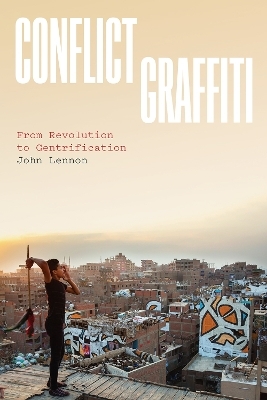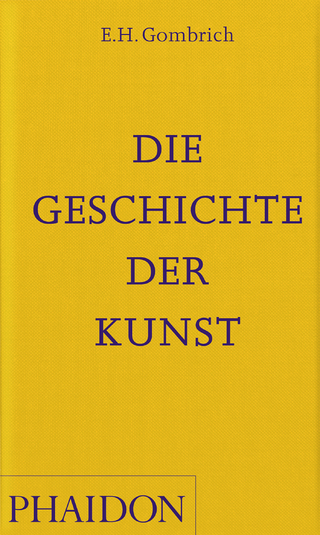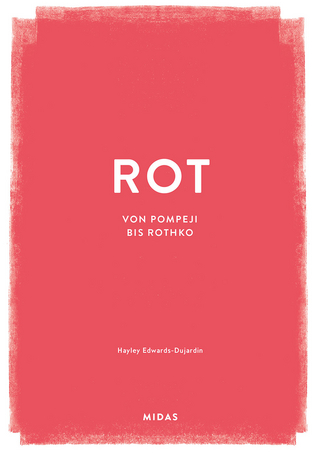
Conflict Graffiti
From Revolution to Gentrification
Seiten
2022
University of Chicago Press (Verlag)
978-0-226-81569-5 (ISBN)
University of Chicago Press (Verlag)
978-0-226-81569-5 (ISBN)
This study examines the waves of graffiti that occur before, during, and after a conflict—important tools of political resistance that make protest visible and material.
Graffiti makes for messy politics. In film and television, it is often used to create a sense of danger or lawlessness. In bathroom stalls, it is the disembodied expression of gossip, lewdness, or confession. But it is also a resistive tool of protest, making visible the disparate voices and interests that come together to make a movement.
In Conflict Graffiti, John Lennon dives into the many permutations of graffiti in conflict zones—ranging from the protest graffiti of the Black Lives Matter movement in Ferguson and the Tahrir Square demonstrations in Egypt, to the tourist-attraction murals on the Israeli Separation Wall and the street art that has rebranded Detroit and post-Katrina New Orleans. Graffiti has played a crucial role in the revolutionary movements of these locales, but as the conflict subsides a new graffiti and street art scene emerges—often one that ushers in postconflict consumerism, gentrification, militarization, and anesthetized forgetting.
Graffiti has an unstable afterlife, fated to be added to, transformed, overlaid, photographed, reinterpreted, or painted over. But as Lennon concludes, when protest movements change and adapt, graffiti is also uniquely suited to shapeshift with them.
Graffiti makes for messy politics. In film and television, it is often used to create a sense of danger or lawlessness. In bathroom stalls, it is the disembodied expression of gossip, lewdness, or confession. But it is also a resistive tool of protest, making visible the disparate voices and interests that come together to make a movement.
In Conflict Graffiti, John Lennon dives into the many permutations of graffiti in conflict zones—ranging from the protest graffiti of the Black Lives Matter movement in Ferguson and the Tahrir Square demonstrations in Egypt, to the tourist-attraction murals on the Israeli Separation Wall and the street art that has rebranded Detroit and post-Katrina New Orleans. Graffiti has played a crucial role in the revolutionary movements of these locales, but as the conflict subsides a new graffiti and street art scene emerges—often one that ushers in postconflict consumerism, gentrification, militarization, and anesthetized forgetting.
Graffiti has an unstable afterlife, fated to be added to, transformed, overlaid, photographed, reinterpreted, or painted over. But as Lennon concludes, when protest movements change and adapt, graffiti is also uniquely suited to shapeshift with them.
John Lennon is associate professor of English at the University of South Florida. He is the author of Boxcar Politics: The Hobo in U.S. Literature and Culture, 1869—1956 and coeditor of Working-Class Literature(s): Historical and International Perspectives.
Preface
an introduction to conflict graffiti
1. walls, streets, and public spaces
2. the messy politics of conflict graffiti: desire, graffiti, and assembling a revolution
3. erasing people and land: banksy, the separation wall, and international graffiti tourists
4. framing hurricane katrina: graffiti and the “new” new orleans
5. “for more than profit”: graffiti, street art, and the gentrification of detroit
conclusion
Acknowledgments
Notes
Index
| Erscheinungsdatum | 21.02.2022 |
|---|---|
| Zusatzinfo | 20 color plates, 53 halftones |
| Sprache | englisch |
| Maße | 152 x 229 mm |
| Gewicht | 426 g |
| Themenwelt | Kunst / Musik / Theater ► Kunstgeschichte / Kunststile |
| ISBN-10 | 0-226-81569-2 / 0226815692 |
| ISBN-13 | 978-0-226-81569-5 / 9780226815695 |
| Zustand | Neuware |
| Informationen gemäß Produktsicherheitsverordnung (GPSR) | |
| Haben Sie eine Frage zum Produkt? |
Mehr entdecken
aus dem Bereich
aus dem Bereich


